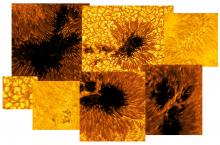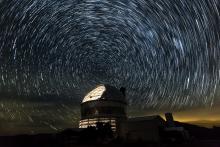Listen to today's episode of StarDate on the web the same day it airs in high-quality streaming audio without any extra ads or announcements. Choose a $8 one-month pass, or listen every day for a year for just $30.
You are here
Taking Control
When it was completed in 1948, the 200-inch telescope at Palomar Observatory in California was the biggest telescope in the world. It was so big, in fact, that astronomers operated it from inside a small “cage” in the top of the telescope tube. They had to manually point the telescope to keep it aimed at the right spot.
Today, the astronomers stay in a warm control room — or even at home — and let computers do the pointing. So do the astronomers who use almost any big telescope in the world. Computers also collect and store the observations, process them, and send them out to the right people. They conduct much of the analysis — sometimes with little human guidance. And they allow astronomers to “see” their observations in new ways — visualizing parts of the universe we can’t possibly see.
In other words, as with much of present-day life, astronomy would look quite different without computers.
And over the next few decades, automation will accelerate. In part, that’s driven by new projects and telescopes that are gathering enormous amounts of data — terabytes every night. That’s just too much for humans to handle.
So astronomy is using techniques from artificial intelligence to teach computers how to sort through massive amounts of data. That will detect patterns where none were seen before, or reveal a single rare object hiding among billions of stars and galaxies — leading to new discoveries about the universe.
More tomorrow.
Script by Damond Benningfield





